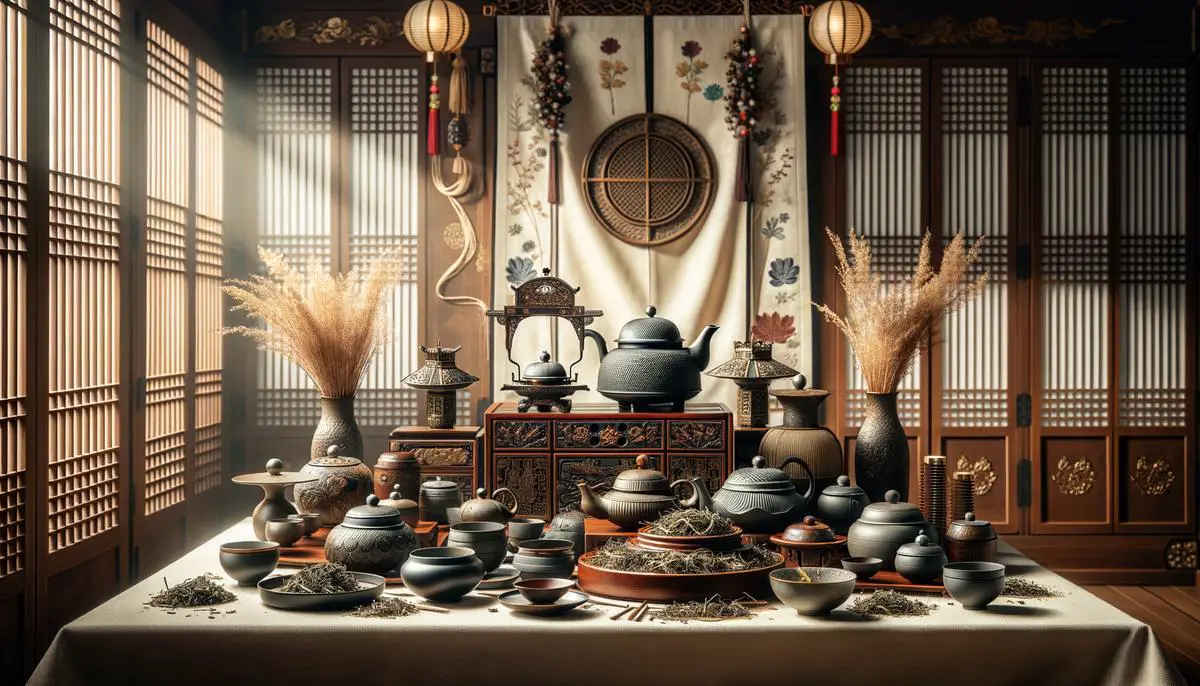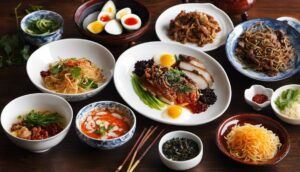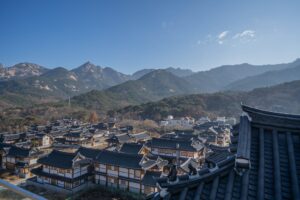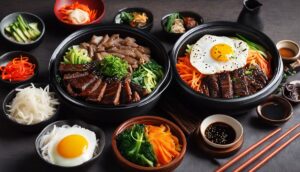Historical Context and Cultural Significance
The Korean tea ceremony, known as Dado, has its roots intertwined with those of neighboring China. The importance of tea in Korea began to flourish during the Three Kingdoms period, between 18 B.C. and A.D. 660, marking the beginning of tea's evolution from a simple beverage into a profound cultural practice that permeates through every strata of Korean society.
During the Goryeo Dynasty from 918 to 1392, tea entrenched itself in the palace, consumed by monarchs and monks alike. It evolved into a spiritual and social fabric, accompanying rites and gatherings, signifying respect and reflection. Tea master Cho Ui in the Joseon Dynasty remarked that tea is quiet and does satisfy one's thirst; it is also a soothing sweep that removes the dust of worldliness.
The integration and adaptation of Chinese tea practices helped shape the foundational elements of the Korean tea ceremony, leading to the development of local variants like Tarye and Darye. These ceremonies delineated strict protocol in terms of gestures, attire, and serving, while showcasing deep-seated philosophical underpinnings, from the representation of unity between male and female in tea vessels to the metaphoric birth of new relations symbolized by tea flowing out from a teapot.
Today, amid the bustling cities and digital advancement, tea remains a cornerstone of cultural identity and heritage in Korea. One can observe rituals echoing through time in serene tearooms or during family gatherings where traditional Korean teas like yujacha or green teas from Hadong-gun are served. The resurgence of tea culture is not confined to tranquil gardens or ceremonial halls but has found resonance globally as Korea expands its cultural outreach through events such as the One with Tea
exhibition hosted by Teaparker Tea House.
Thus, Korean tea ceremonies, living relics of time-honored traditions, manifest profound stories encapsulating exchange, resilience, and adaptation—a dance of leaves steeped through centuries, flavoring both cup and culture.
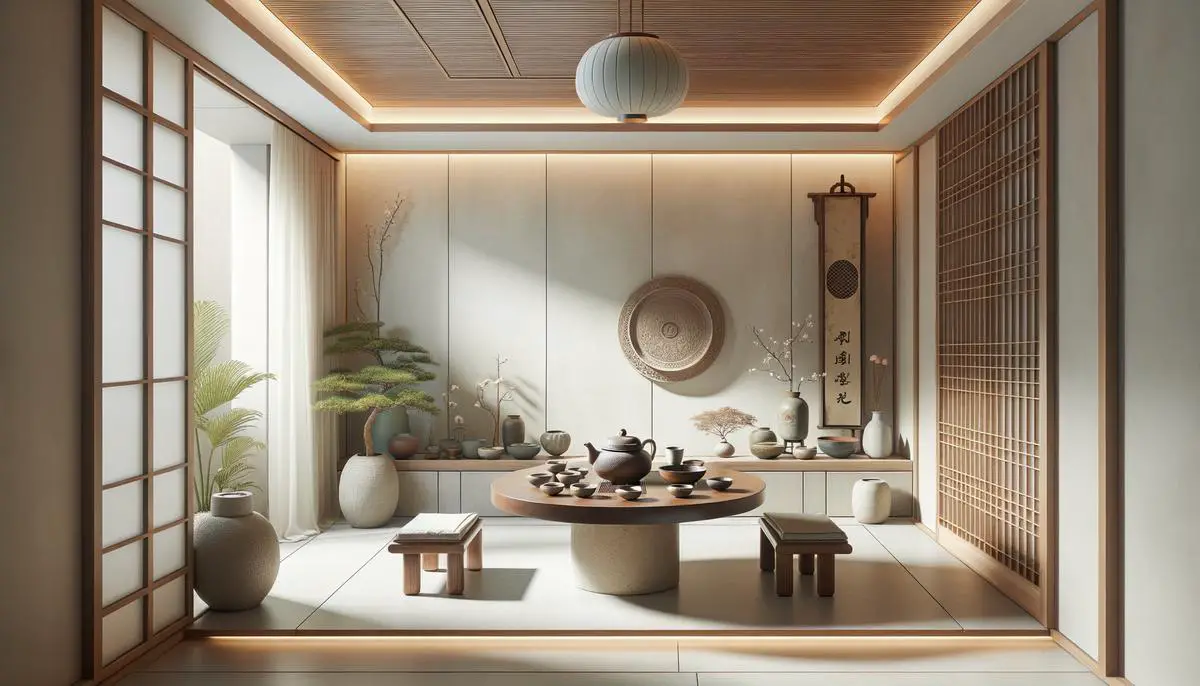
Ceremonial Practices and Symbolism
In the deeply reverential atmosphere of the Korean tea ceremony, every element holds symbolic significance, embodying centuries-old traditions meant to evoke philosophical contemplations and demonstrate esteem.
The central ritual, the act of preparing the tea itself, known as Darye, is a nuanced process intended to reflect the purity, clarity, and calmness that the practice promotes. The preparation involves carefully measuring and sifting the tea leaves, warming the teaware, and controlling the water temperature to enhance the tea's inherent qualities without overshadowing them.
The ceremonial attire, usually Hanbok, Korea's traditional dress, mirrors the philosophy behind the ceremony wherein simplicity is regarded as a return to an unfeigned, pristine state of mind. The colors and materials of Hanbok can represent societal statuses or seasons, indicating a harmonious interaction between human and nature.
Tea utensils are regarded as crucial participants in the ritual. The teapot, often crafted from Korean ceramic called celadon, symbolizes the earth. The act of serving tea using this teapot is a gesture of offering one's respect and hospitality. The transfer of the tea from pot to cup represents the thoughtful passage of nature's best elements from host to guest.
- The handle of the teapot pivoting from the host to the recipient symbolizes an offering of spirit and goodwill.
- The lid represents heaven, enveloping the act and conversation under a celestial sphere, signifying a balance between human endeavor and divine protection.
Each cup of tea served is ideally consumed in three sips—the first being about appreciating the tea's aroma, the second, its flavor, and the third its essence—allowing the drinker to fully immerse in the nuanced experience, philosophically cleansing oneself with each sip.
In essence, a Korean tea ceremony is both a philosophical doctrine and a way of life encapsulated in a calm soiree fashioned from leaf-steeped tradition. Every sip and every technique elaborates a time-honored story that connects the participants with each other and with the history and culture of Korea itself.
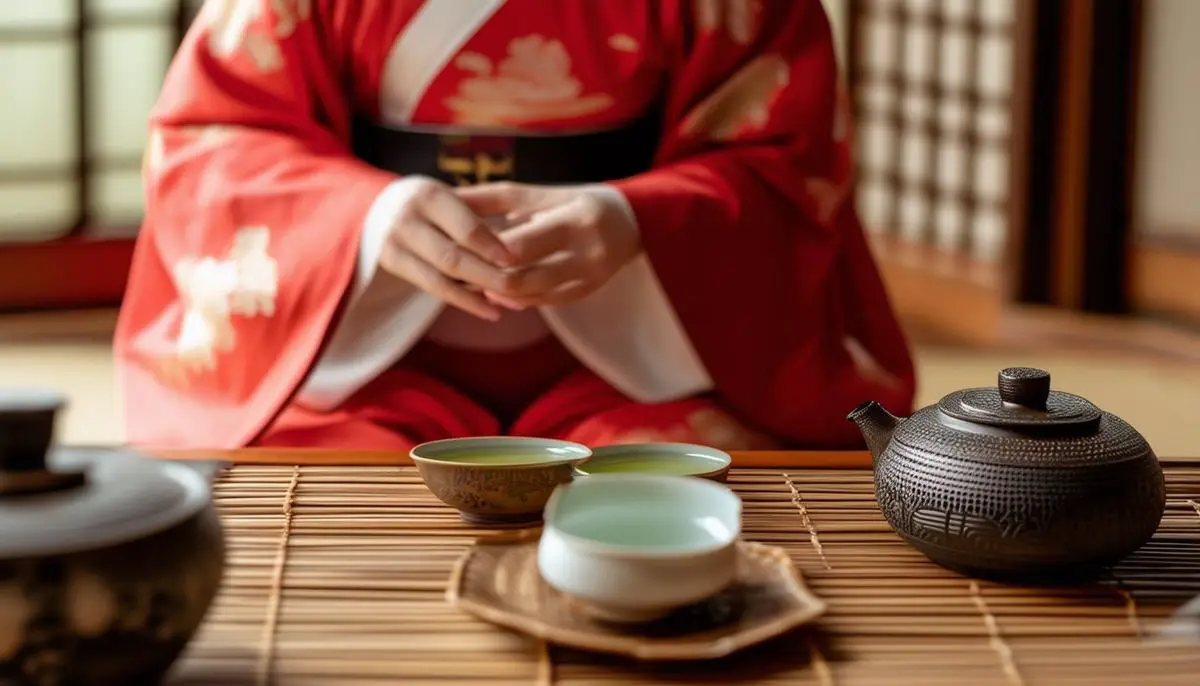
Tea Types and Brewing Techniques
Green tea, predominant in Korean tea ceremonies, is carefully cultivated and harvested during specific seasons that coincide with traditional lunar calendar markers such as Gokwoo
(around April), the period for picking the first tea leaves of the year. These early leaves, renowned for their delicate flavor and elevated antioxidants, give rise to top-tier green teas like Ujeon and Sejak.
Herbal teas, known commonly as 'cha' in Korean, such as ginseng and ginger tea, bring forth a wellness aspect intrinsic to the Korean tea tradition. Ginseng tea, revered as 'Insam-cha' in Korea, involves careful simmering of ginseng roots to extract a bittersweet depth. Equally esteemed for its tranquility-inducing properties is the herbal chamomile tea, or 'Gamguk-cha', which consists of dried chamomile flowers that offer soothing relief and digestive benefits.
The ritual and method of tea brewing—Daryung—is an intricate dance of temperature, proportion, and timing intended to unveil each tea's distinct story. For green tea, the water temperature is ideally kept just below boiling (around 70-80°C) to prevent bitterness from the leaves, promoting a brew that is crisp, subtly sweet, and brimming with clarity.
The technique varies slightly for herbal teas; for instance, the whole ginseng root may be gently simmered over an extended period, coaxing out a medley of deep, revitalizing flavors. Such attention to detail in the brewing process pampers each leaf and root segment, allowing a full expression of its intrinsic qualities and therapeutic traits.
As such, the ceremonial brewing is not merely about liquid meeting leaf but a disciplined exploration of the subtle balances between flavor, benefit, nurture, and nature. This careful orchestration of tea preparation is aimed at achieving a harmonious experience that heightens the senses and aligns well-being.
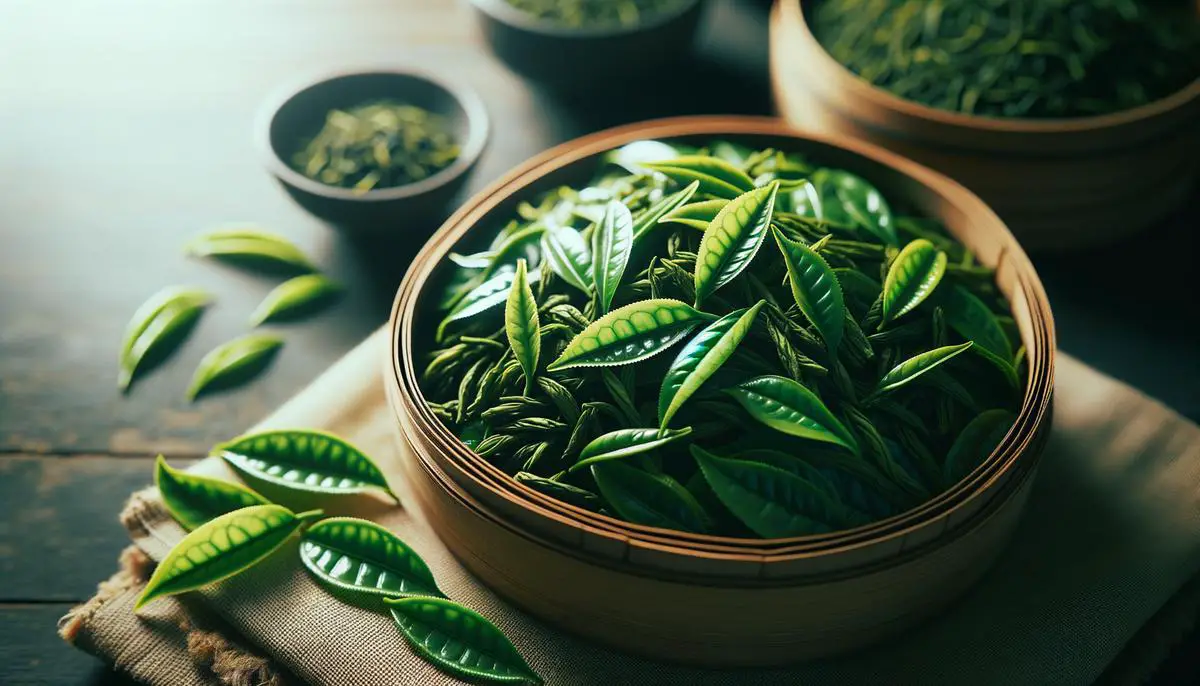
Modern Adaptations and Global Influence
Amidst the accelerated pulse of today's global interaction, the Korean tea ceremony has not only perpetuated its traditional essence but has elegantly molded itself to contemporary cultural dialogues, resonating with a global audience.
At international junctions, like the annual World Tea Expo or various cultural showcases across countries, the Korean tea ceremony preserves the ethos of ancient traditions while embracing modern sensibilities that align with the international palate. Visitors and tea enthusiasts are introduced to traditional Korean tea practices crafted within approachable, universal themes.
The format and presentation methods of Dado are often adapted to suit educational purposes or audience engagement needs during these events. The somber, contemplative procedures historically shrouded within palace walls now take place in interactive workshop settings where participants eagerly engage with the ritual.
Tea varieties are expanding beyond the traditional selections. While green tea from Hadong and the exotic Yujacha remain staples, tea masters might now infuse offerings with unique international mixes or brewing techniques influenced by global tea trends. This adaptation ensures Korean tea culture remains vital and relevant, fostering new generations of tea aficionados both within Korea and worldwide.
Through digital media's outreach and the proliferative charm of cultural festivals, elements of the Korean tea ceremony are increasingly incorporated into other cultural narratives. For instance, during cultural exchange programs in schools or universities, students not only learn about the tea itself but also explore its ceremonial etiquette.
In essence, the respectful evolution of the Korean tea ceremony ensures that it is seen as a living tradition that continuously dialogues with and appeals to a broad audience in an ever-globalizing world. This delicate balance between maintaining authenticity while embracing global adaptability sees this ancient ceremony continuing to steep its way into the cultural fabric of societies far beyond Korea's shores.
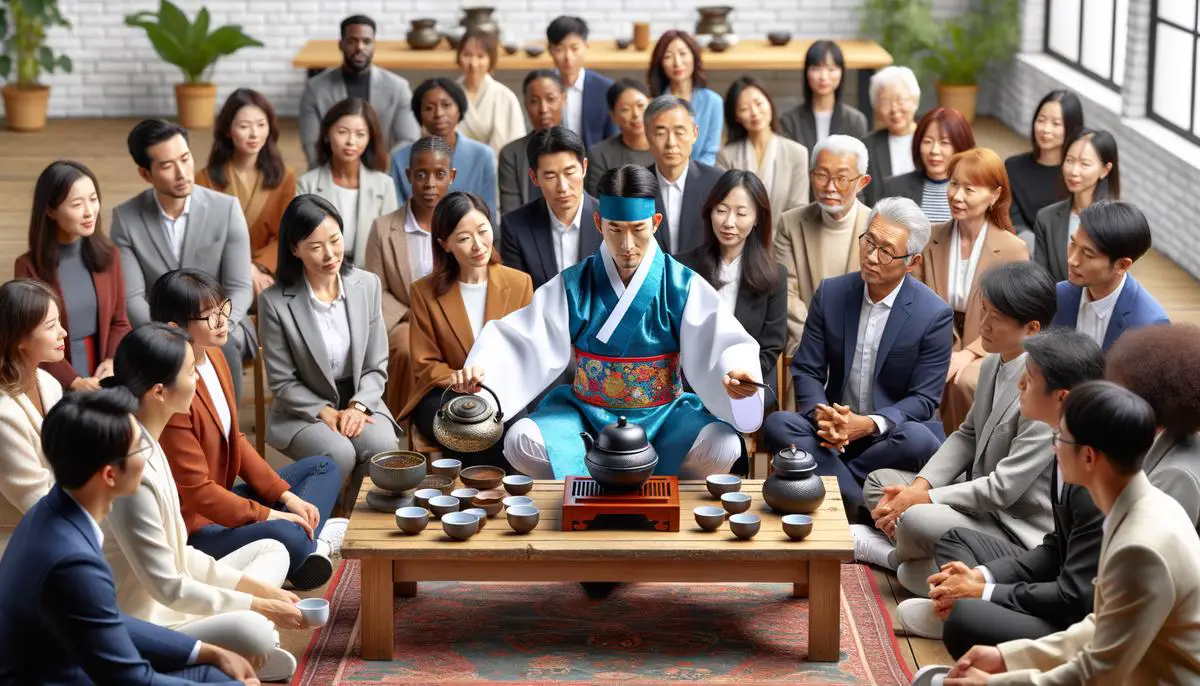
Ceremonial Etiquette and Guest Experiences
Upon entering the tranquil space where the Korean tea ceremony is held, guests are stepping into a realm that demands a certain decorum and mindset, evoking respect, awareness, and presence. The etiquette of engaging in a Korean tea ceremony incorporates multiple layers concerned with humility, respect, and ritual purity, refining the event's experience into a seamless cultural insight fraught with meaning and consideration.
Participants are expected to attire themselves in a way that honors tradition while embracing the humble and serene nature of the ceremony. This typically involves donning elegant yet modest apparel, with Hanbok being an appreciated choice. The clothing becomes part of the ritual itself, echoing centuries of cultural attire adapted to the serene motions of tea preparation and enjoyment.
One of the initial gestures a guest should master is the Korean bow, which embodies respect and gratitude towards their host and the shared cultural moment. What follows is a structured sequence where every move is measured and etiquettes such as speaking softly, avoiding abrupt movements, and maintaining a composed demeanor are expected.
The sensory experience associated with participation in a tea ceremony can be profound. The space's curated aesthetics, often filled with elements of natural beauty such as ceramic artistry and calligraphy, pave way for a visually tranquilizing environment. The sounds of calmly pouring water and the soft rustle of tea leaves or handwoven textiles further encapsulate participants in an almost meditative state.
Guests are invited to engage fully with their senses:
- Watching the precise movements of the host
- Smelling the aromatic subtleties released by the tea
- Feeling the warmth of the teacup against their hands
- Listening to the poetic explanations of each step
- Ultimately tasting the tea—a culmination of all the preparatory acts distilled into delicate sips
Each sip encourages savored reflection, aligning with the ceremony's rhythm and allowing a deep appreciation of the moment.
Thus, participating in a Korean tea ceremony is not merely being present but experiencing a milieu where every aspect is suffused with historical significance and profound personal reflection. This event offers an immersion into Korean culture's elegantly corded tenets and allows each guest a chance to transport away from their everyday life into a ritually-paced symphony of sensory and emotional interlude.
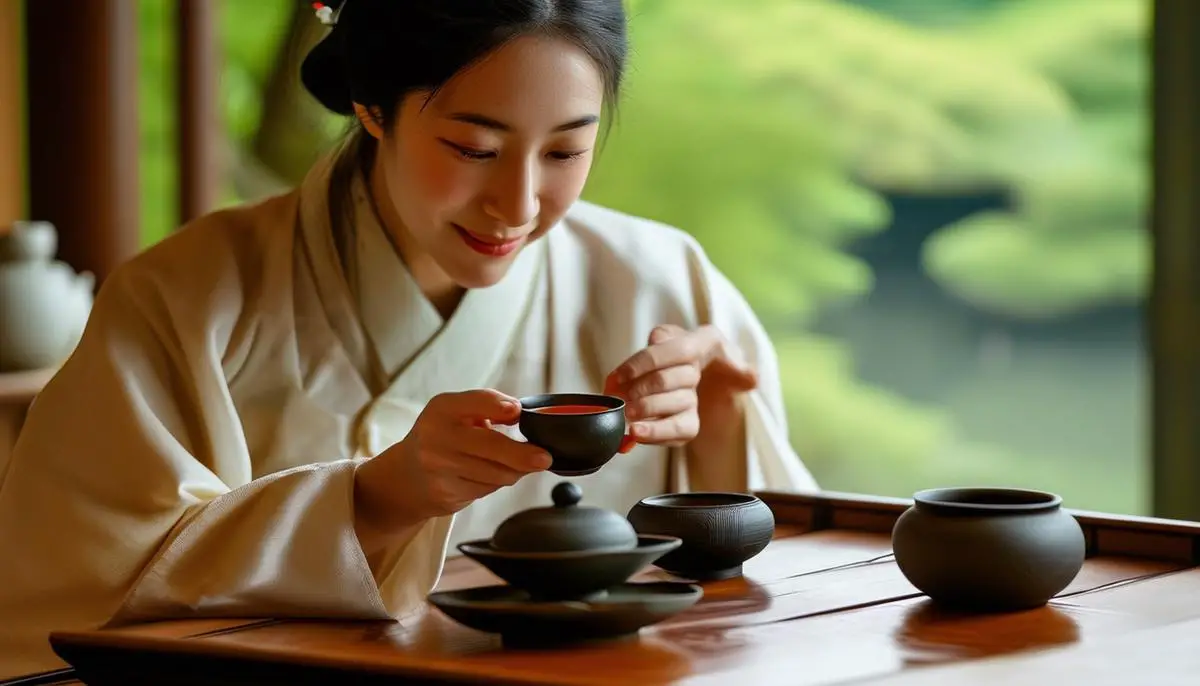
- Mair VH, Hoh E. The True History of Tea. Thames & Hudson; 2009.
- Park JW. The Way of Tea in Korean Tea Ceremony. Journal of the Korean Home Economics Association. 2009;47(2):53-60.
- Hong SK. The Unique Characteristics of Korean Tea Culture and its Globalization. Journal of the Korean Tea Society. 2011;17(2):1-12.


